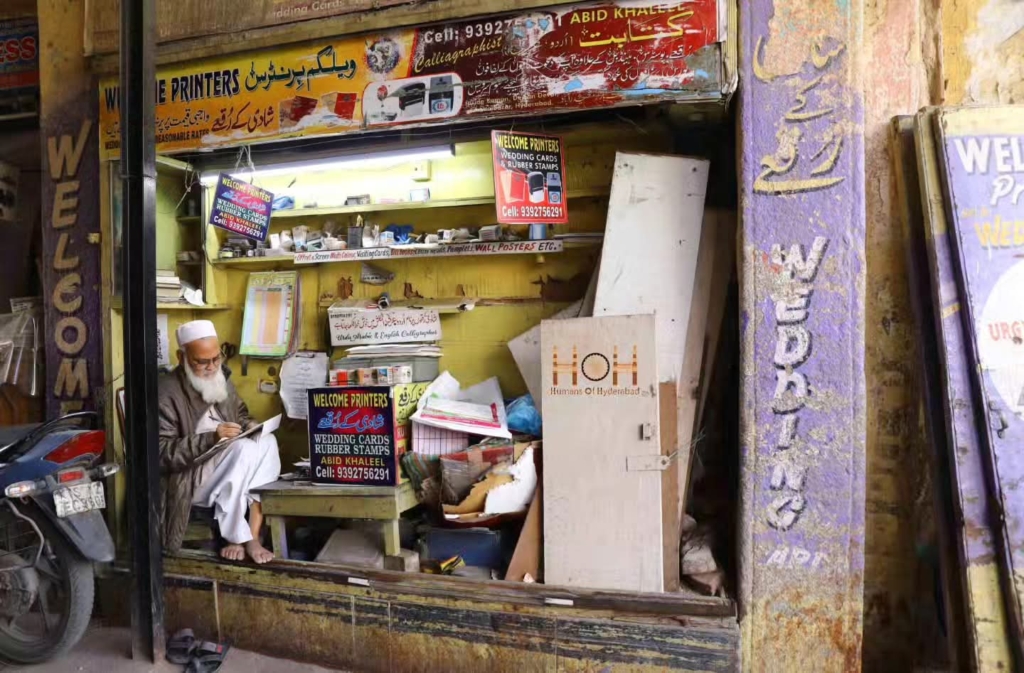“I’ve been sitting at Welcome Printers in Chattabazar, near Charminar, for over thirty-five years, writing Urdu, Arabic, and English letters by hand. People often ask me, “Why don’t you just type it on a computer? It’s so much faster.” I smile and shake my head. They don’t see what I see. Every curve, every dot carries centuries of history, and a little bit of me.

I learned calligraphy from my father as a boy, watching him move his bamboo pen and ink with patience and devotion. He taught me that letters are not just words; they are living art. Computers can make perfect letters, yes, but they cannot feel, cannot breathe, cannot live. Every piece I make is unique. Even if I write the same word twice, each time it is different. My work follows the Khushkhati style, the traditional, flowing script that gives Urdu and Arabic letters their elegance and soul.

Chattabazar is always alive — the calls of merchants, the footsteps of people hurrying past, the creak of old wooden shutters. The lanes are famous for wedding printing; shops here have printed invitations for generations. Next street, Mehboob Radio, my friend’s repair shop, hums with radios being fixed, a reminder of the city’s old trades that survive alongside mine. And yet, in this little shop, time slows. The ink stains my fingers, the paper listens to my hands, and I feel connected to Hyderabad’s past, to every master who ever wrote these letters.

I often think in verse, as the old poets did:
“Har harf mein hai ek kahani, har naqsh mein hai ek rooh” — Every letter has a story, every stroke carries a soul.
The pens I use are hardly available in the market anymore; I’ve been using the same ones for decades. Orders come in steadily — wall posters, flyers, wedding cards, visiting cards — and I carefully handwrite names on envelopes before they are scanned and printed for bulk orders. I work about twelve hours a day. When asked about the future of calligraphy, in my opinion, it lies in the hands of the government. The government does little to promote or support this art.
But this is my life. I am Mohammed Abid Khaleel, and this is my calligraphy.”
